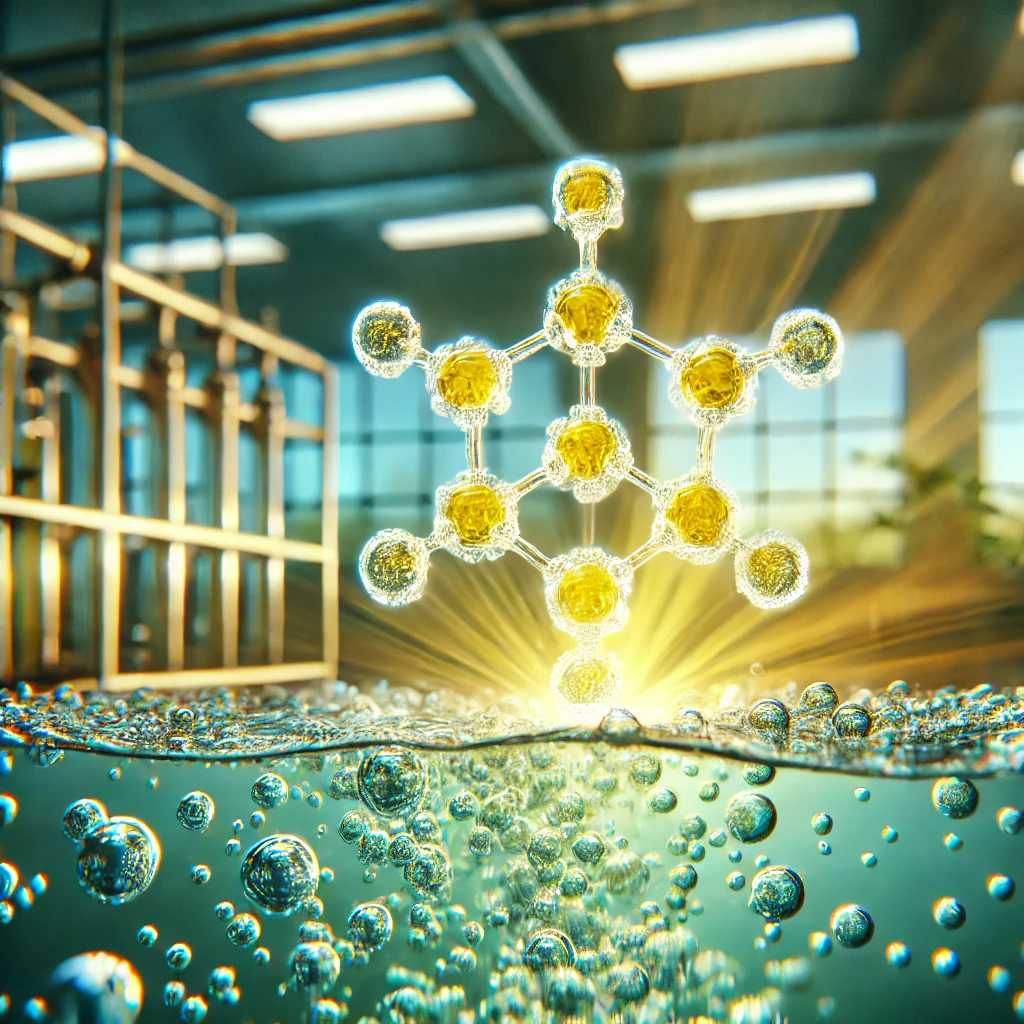Chlorine dioxide (ClO₂) may sound complex, but this vibrant yellow gas is a powerful ally in sanitation, water treatment, and even human health. Its unique chemical properties make it an essential tool in cleaning and disinfecting, and its use has expanded in recent years, with many interested in its broader benefits. Let’s dive into what chlorine dioxide is, how it’s created, and why it’s a go-to solution for sanitization and certain medical applications.
What Is Chlorine Dioxide?
Chlorine dioxide is a compound with a straightforward formula: one of its atom and two oxygen atoms (ClO₂). While it sounds similar to household bleach, which is sodium hypochlorite, chlorine dioxide functions in a completely different way. Unlike bleach, which works by creating harsh chlorinated by-products, chlorine dioxide produces fewer residuals, making it both powerful and more eco-friendly.
In its natural state, It is a gas with a distinct yellow-green color and is quite soluble in water. When dissolved, it becomes an incredibly effective antimicrobial agent, able to kill bacteria, viruses, fungi, and other pathogens, making it ideal for various applications.
How to Create Chlorine Dioxide?
You can create it on-site by mixing a sodium chlorite solution with an acid, typically hydrochloric acid. When these two substances combine, they produce chlorine dioxide gas. This gas is then dissolved in water, forming a solution ready for various uses.
For commercial and industrial purposes, chlorine dioxide is typically created in a highly controlled process. Specialized equipment ensures that the concentration levels are appropriate and safe for the intended application, whether it’s for disinfecting water, surfaces, or use in other settings.
Benefits in Water Sanitization:
One of the primary uses of chlorine dioxide is in water treatment. Here’s why it stands out:
- Effective Against Biofilms: It is particularly good at breaking down biofilms, the slimy layers that bacteria create to protect themselves on surfaces. By penetrating these biofilms, it ensures a thorough, long-lasting clean, crucial for water systems.
- Broad-Spectrum Disinfection: It can target a range of harmful pathogens in water, including bacteria, viruses, and protozoa. This makes it effective in preventing diseases that spread through contaminated water.
- Environmentally Friendly: Unlike some water treatment agents that leave harmful by-products, It breaks down into harmless substances, leaving minimal environmental impact. This is especially important for industries that discharge treated water into natural bodies of water.
- Better Taste and Smell: Water treated with It often tastes and smells better than water treated with other disinfectants. It eliminates the strong chlorinated odor left by traditional bleach-based treatments.
Medical Benefits:
Though best known for its role in water sanitation, chlorine dioxide has sparked interest in the medical field, with certain uses gaining approval for safe and regulated applications. Notably:
- Oxidative Agent: Chlorine dioxide is a potent oxidizer, which means it can destroy pathogens by disrupting their cell walls. In low, carefully controlled doses, this oxidative process can help sterilize and disinfect surfaces in medical environments, and research is ongoing into its broader applications.
- Antiseptic Uses: Chlorine dioxide acts as an antiseptic in dental care procedures, effectively cleaning and disinfecting gums and mouth tissues. Its quick action and low residue make it a preferred choice over traditional antiseptics.
- Immune Support: Some suggest that, in very dilute concentrations, It may have a role in supporting immune responses by targeting specific pathogens. While some of these uses remain under investigation, there is active research into their potential in combating certain infections and health conditions.
Safety Considerations and Responsible Use
It is a powerful compound, and it’s essential to use it safely and responsibly. Sophisticated equipment typically manages industrial uses, while strict guidelines govern its medical and public health applications. When handled improperly, it can cause irritation to the skin, eyes, and respiratory system.
In therapeutic settings, it’s critical to follow professional guidelines and consult with healthcare professionals before exploring chlorine dioxide-based solutions. Research into its applications is expanding, but regulations and best practices ensure that safety is the top priority.
The Bottom Line: A Versatile Tool for Clean Water and Health
Its effectiveness, eco-friendly profile, and potential in medical applications make it a versatile and valuable tool in the world of sanitation and beyond. Whether it’s making water cleaner and safer or serving as a potent disinfectant, it continues to prove itself as a reliable and powerful ally. While research into its broader medical benefits is ongoing, it’s clear that it’s unique properties have earned it a well-deserved place in both public health and industrial sanitation.

